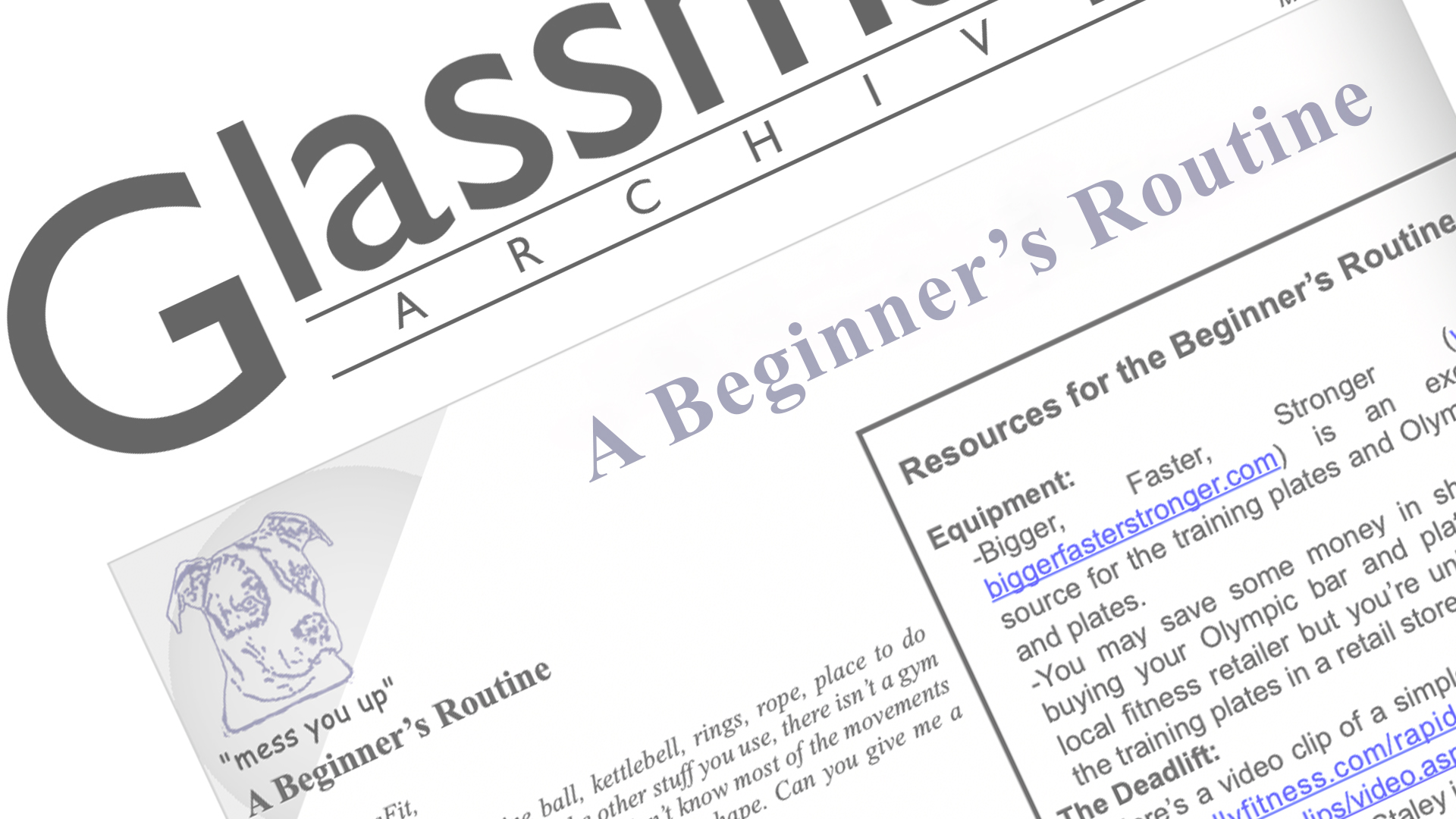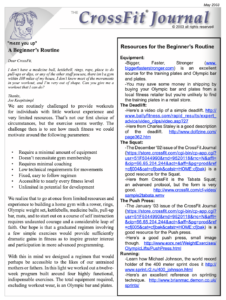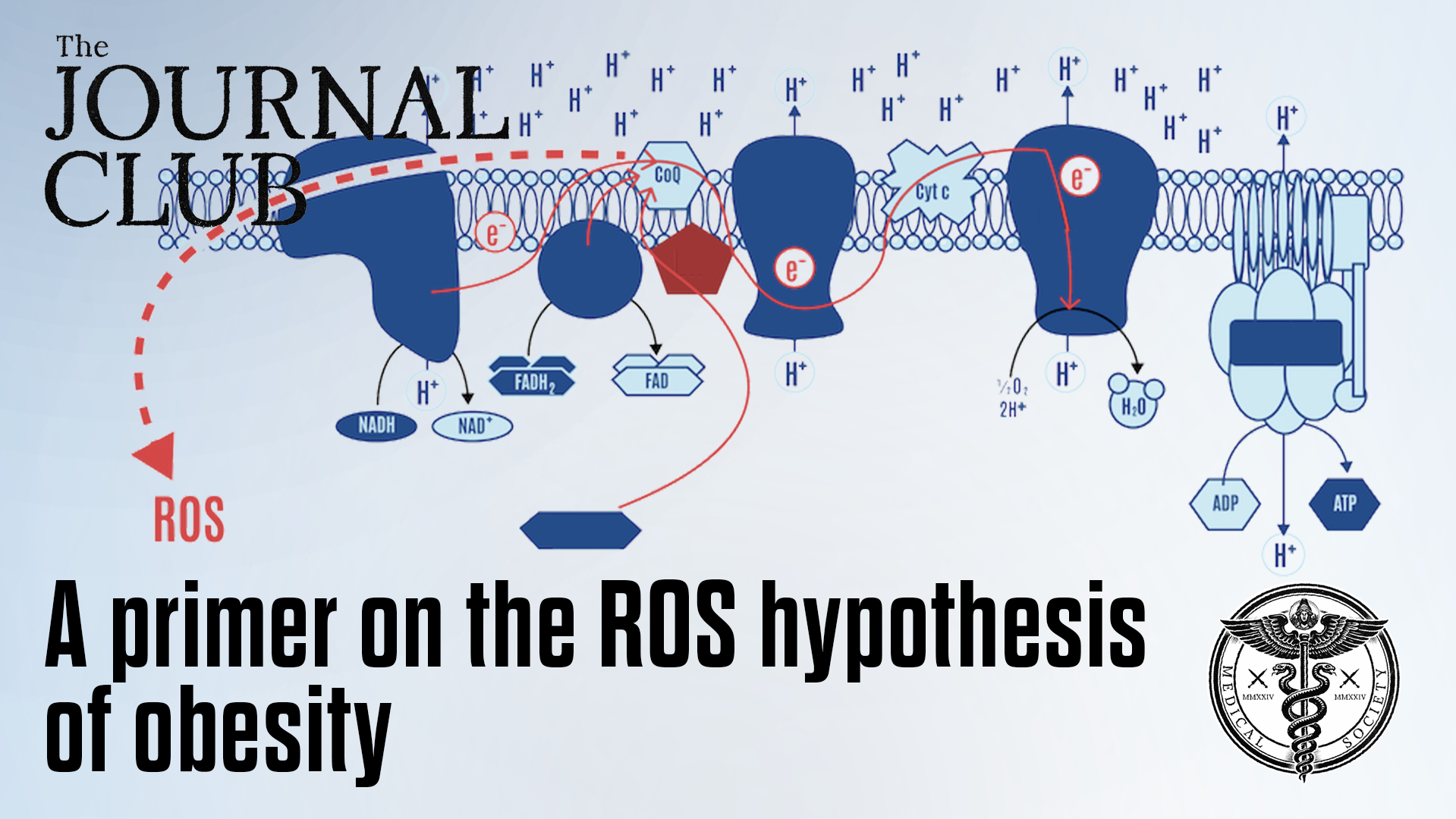By Greg Glassman
Dear CrossFit,
I don’t have a medicine ball, kettlebell, rings, rope, place to do pull-ups or dips, or any of the other stuff you use, there isn’t a gym within 100 miles of my house, I don’t know most of the movements in your workout, and I’m very out of shape. Can you give me a workout that I can do?
Thanks,
Joe Keepitsimpl
We are routinely challenged to provide workouts for individuals with little workout experience and very limited resources. That’s not our first choice of circumstances, but the exercise seems worthy. The challenge then is to see how much fitness we could motivate around the following parameters:
- Require a minimal amount of equipment
- Doesn’t necessitate gym membership
- Requires minimal coaching
- Low technical requirements for movements
- Fixed, easy-to-follow regimen
- Accessible to nearly every fitness level
- Unlimited in potential for development
We realize that to go at once from limited resources and experience to building a home gym with a rower, rings, Olympic weight set, kettlebells, medicine balls, pull-up bar, mats, and to start out on a course of self instruction requires undaunted courage and a considerable leap of faith. Our hope is that a graduated regimen involving a few simple exercises would provide sufficiently dramatic gains in fitness as to inspire greater interest and participation in more advanced programming.
With this in mind we designed a regimen that would perhaps be accessible to the likes of our untrained mothers or fathers. In this light we worked out a 12-week program built around four highly functional, indispensable exercises. The total equipment required, excluding workout wear, is an Olympic bar and plates.
The exercises are:
- Walk/jog/run
- Deadlift
- Push press
- Squat
The regimen is a five-day per week program that requires a commitment of less than 30 minutes per day. The time and frequency parameters mesh in our experience with the willingness and capacities of the target audience.
We have included links to resources for both instruction in the mechanics of the exercises and purchase of the weight equipment. We could have engineered a program that obviated the need for weights but this would have demanded considerably greater starting fitness in order to include pull-ups, dips, and other body-weight exercises and yielded substantially less fitness in the end.
We recommend that you buy an Olympic bar and plates from a local retailer and training plates and bumper plates from one of the vendors we list.
You can either lug your weights to a local high school or college track or map out a 400-meter course in your neighborhood and work out from home. In mapping a 400-meter course use your car’s odometer and find a point just a little over one-tenth of a mile from home. Running to that point and back will be approximately 400 meters.
The guidelines for the program are as follows:
- Practice and study the deadlift, push press and squat for a week before beginning the routines with light to moderate weight where the purpose is to learn good technique
- Start with the greatest weight with which you are both comfortable and can execute perfect form on both the deadlift and the push press
- Generally attempt to increase the load by approximately five pounds per week on the deadlift
- Generally attempt to increase the load for the push press by approximately five pounds every other week
- One more lap is added on Tuesday’s and Thursday’s workouts every two weeks
- Increase loads only when the last workout was completed successfully
- Time Tuesday’s and Thursday’s runs with a stopwatch
- From weeks 3-12, Tuesday’s and Thursday’s workouts are multiple efforts at 400 meters where the rest between efforts is precisely equal to the preceding run’s time
- From weeks 4-12, Monday’s, Wednesday’s and Friday’s workouts are timed from beginning to end
- From weeks 6-12, endeavor to maintain or decrease workout times on Monday’s, Wednesday’s and Friday’s workouts
- Attempt to decrease 400-meter times for Tuesday’s and Thursday’s workouts throughout all 12 weeks
- Saturday and Sunday are rest days
- Let the intensity of your effort build gradually with each week
- Start comfortably; take it easy the first few weeks

Resources for the Beginner’s Routine
Equipment:
- Rogue Fitness is an excellent source for the training plates and Olympic bar and plates.
- You may save some money in shipping by buying your Olympic bar and plates from a local fitness retailer, but you’re unlikely to find the training plates in a retail store.
The Deadlift
- This article from the CrossFit Journal is a good resource for the deadlift:
The Squat:
- This December 2002 article from the CrossFit Journal is a good resource for the squat:
The Push Press:
- This January 2003 article from the CrossFit Journal is a good resource for the push press:
This article, by BSI’s co-founder, was originally published in The CrossFit Journal. While Greg Glassman no longer owns CrossFit Inc., his writings and ideas revolutionized the world of fitness, and are reproduced here.
Coach Glassman named his training methodology ‘CrossFit,’ which became a trademarked term owned by CrossFit Inc. In order to preserve his writings in their original form, references to ‘CrossFit’ remain in this article.
Greg Glassman founded CrossFit, a fitness revolution. Under Glassman’s leadership there were around 4 million CrossFitters, 300,000 CrossFit coaches and 15,000 physical locations, known as affiliates, where his prescribed methodology: constantly varied functional movements executed at high intensity, were practiced daily. CrossFit became known as the solution to the world’s greatest problem, chronic illness.
In 2002, he became the first person in exercise physiology to apply a scientific definition to the word fitness. As the son of an aerospace engineer, Glassman learned the principles of science at a young age. Through observations, experimentation, testing, and retesting, Glassman created a program that brought unprecedented results to his clients. He shared his methodology with the world through The CrossFit Journal and in-person seminars. Harvard Business School proclaimed that CrossFit was the world’s fastest growing business.
The business, which challenged conventional business models and financially upset the health and wellness industry, brought plenty of negative attention to Glassman and CrossFit. The company’s low carbohydrate nutrition prescription threatened the sugar industry and led to a series of lawsuits after a peer-reviewed journal falsified data claiming Glassman’s methodology caused injuries. A federal judge called it the biggest case of scientific misconduct and fraud she’d seen in all her years on the bench. After this experience Glassman developed a deep interest in the corruption of modern science for private interests. He launched CrossFit Health which mobilized 20,000 doctors who knew from their experiences with CrossFit that Glassman’s methodology prevented and cured chronic diseases. Glassman networked the doctors, exposed them to researchers in a variety of fields and encouraged them to work together and further support efforts to expose the problems in medicine and work together on preventative measures.
In 2020, Greg sold CrossFit and focused his attention on the broader issues in modern science. He’d learned from his experience in fitness that areas of study without definitions, without ways of measuring and replicating results are ripe for corruption and manipulation.
The Broken Science Initiative, aims to expose and equip anyone interested with the tools to protect themself from the ills of modern medicine and broken science at-large.
Support the Broken Science Initiative.
Subscribe today →
recent posts
Journal Club, September 25, 2025
Emily Kaplan challenged a room full of pharma executives and physicians with a radical message: MetFix affiliates around the world are reversing chronic disease not with new drugs, but by teaching people how their bodies actually work.




